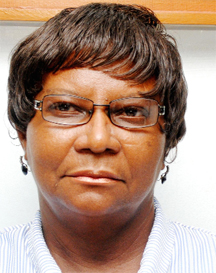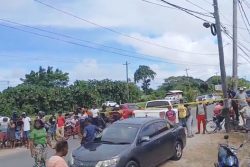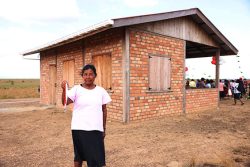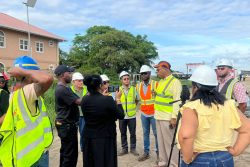The second phase of an extensive local agricultural project aimed at popularising shade house farming technology in communities across the country is likely to kick off by March 2013, following the injection of a US$1.175 million grant from the Japanese Government, Head of the Partners of the Americas (Guyana) Project Myrtle Richards said.
Richards told Stabroek Business that the Japanese grant, which will be administered by the Inter American Development Bank (IDB) will be a follow-up to the earlier Shade House Vegetable Production Project launched in several parts of the country with the support of multilateral agencies including Partners of the Americas, Caribbean Self-Reliance International (CASRI) and the IDB, through its Multilateral Investment Fund.
According to Richards, the initiative which will continue to promote organic farming utilising shade house technology will focus on the creation of sustainable livelihoods through small and micro farming projects in Regions Two, Three, Four, Five, Six, Seven, Nine and Ten. She said the project will target youth, women and Amerindian communities.

“Our aim is to reach up to 1,000 persons in the communities where we will be operating but we are reminded of the fact that while the first phase of the project set a target of 20 shade houses, we actually built 49. Additionally, we had envisaged reaching 200 farmers and we got closer to 250,” Richards said.
According to Richards, the funding from the Japanese was secured on the basis of a project proposal submitted by Partners of the Americas after the Japanese had sought applications from countries in the Americas and the Caribbean. Of the 1,145 applicants, Partners of the Americas (Guyana) was one of seven organisations to secure a grant. Funding for the first phase of the project came from the IDB’s Multilateral Investment Fund (MIF) project.
Richards said that since the completion of the first phase of the project some of the farmers have gone into large-scale hydroponic farming and are making a living from it. She said the second phase of the project would seek to reconnect with the farmers with whom the first phase had collaborated. She explained that the reconnection was aimed at doing more work in the area of marketing. “We were not able to do as much as we had hoped to open adequate markets for the hydroponic products and we are hoping to work with the farmers and the potential buyers this time around to create more market opportunities.”
Richards told Stabroek Business that the exercise of advertising for consultants to work along with the various facets of the project had already begun and training had commenced in the use of substrate of paddy, shell and sand for planting.
Meanwhile, Richards said she believed the project provided individuals and communities with “new options in the agricultural sector” which could offer people who may not have traditionally had an interest in farming with an opportunity to subsidise their incomes. “We are hoping that more people can take advantage of the training. More than that we believe it provides an important food security niche,” Richards said.
At its inception, the project will also seek to popularise the initiative by paying “project promotion” visits to various communities in order to generate interest. Richards said plans for the further popularisation of hydroponic farming might include the creation of a National Association of Hydroponic Growers and the possible staging of hydroponic exhibitions.






